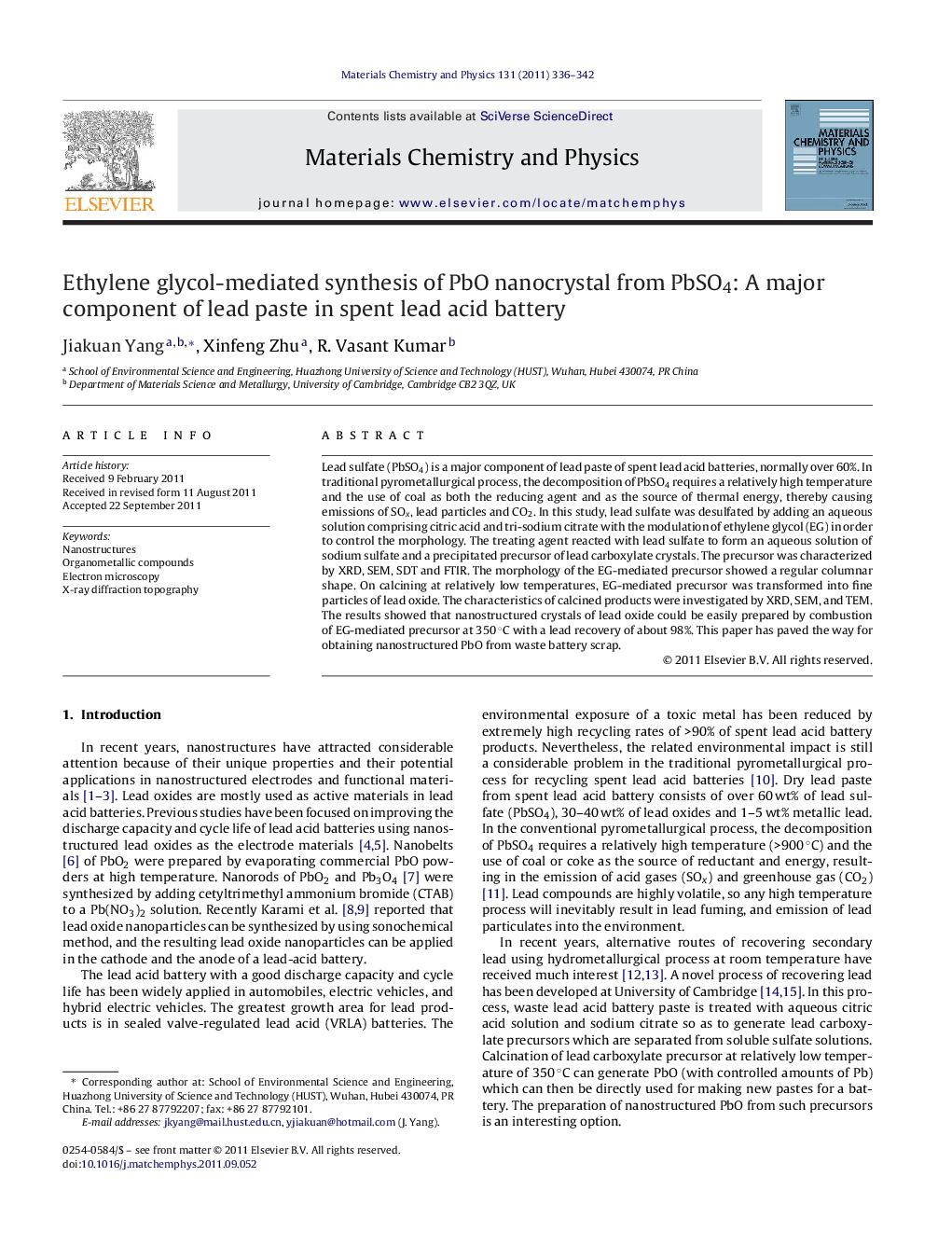| Article ID | Journal | Published Year | Pages | File Type |
|---|---|---|---|---|
| 1523933 | Materials Chemistry and Physics | 2011 | 7 Pages |
Lead sulfate (PbSO4) is a major component of lead paste of spent lead acid batteries, normally over 60%. In traditional pyrometallurgical process, the decomposition of PbSO4 requires a relatively high temperature and the use of coal as both the reducing agent and as the source of thermal energy, thereby causing emissions of SOx, lead particles and CO2. In this study, lead sulfate was desulfated by adding an aqueous solution comprising citric acid and tri-sodium citrate with the modulation of ethylene glycol (EG) in order to control the morphology. The treating agent reacted with lead sulfate to form an aqueous solution of sodium sulfate and a precipitated precursor of lead carboxylate crystals. The precursor was characterized by XRD, SEM, SDT and FTIR. The morphology of the EG-mediated precursor showed a regular columnar shape. On calcining at relatively low temperatures, EG-mediated precursor was transformed into fine particles of lead oxide. The characteristics of calcined products were investigated by XRD, SEM, and TEM. The results showed that nanostructured crystals of lead oxide could be easily prepared by combustion of EG-mediated precursor at 350 °C with a lead recovery of about 98%. This paper has paved the way for obtaining nanostructured PbO from waste battery scrap.
► Nanostructured lead oxides were prepared by using PbSO4 as a starting material. ► The EG precursor showed the columnar-like morphology with the length of about 10 μm. ► The EG precursor was completely different from the morphology of the CA precursor. ► The calcined products in the size of 50–100 nm were prepared from the EG precursor.
